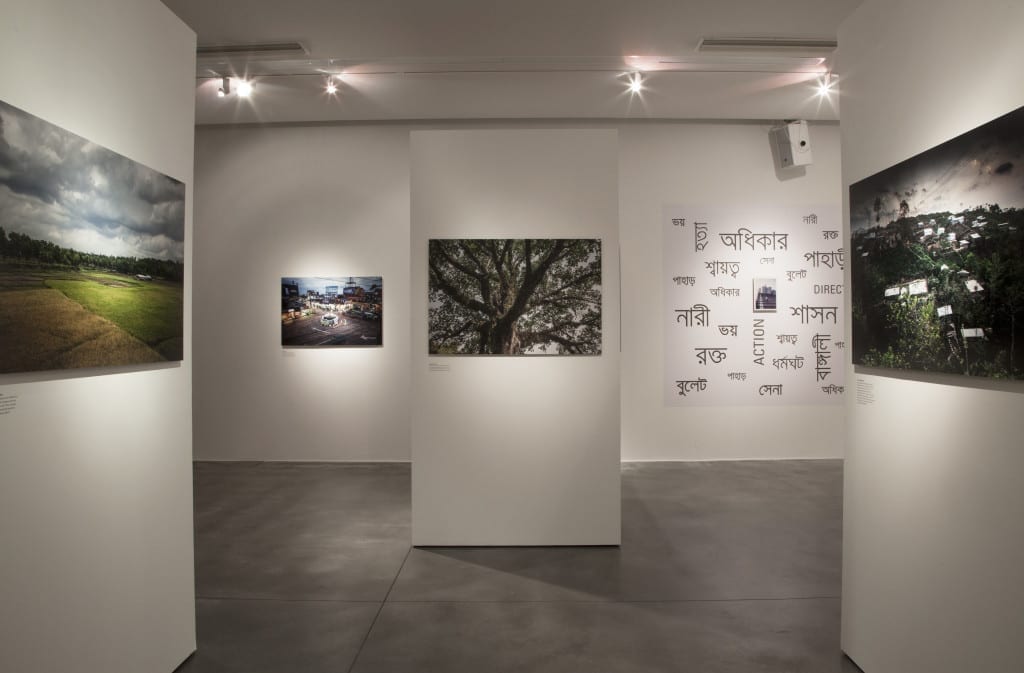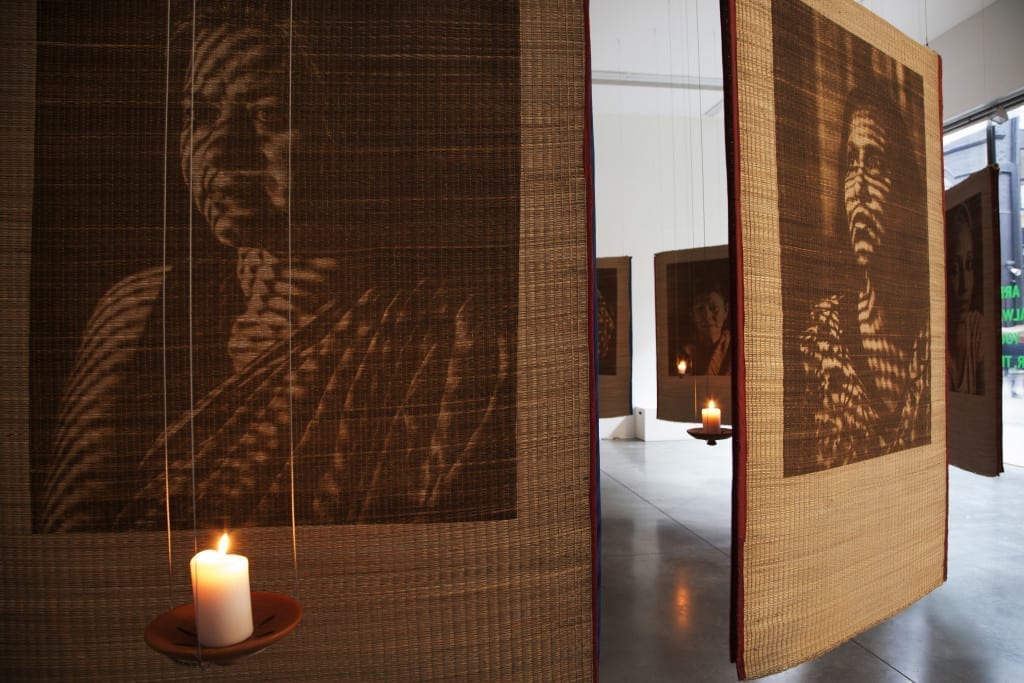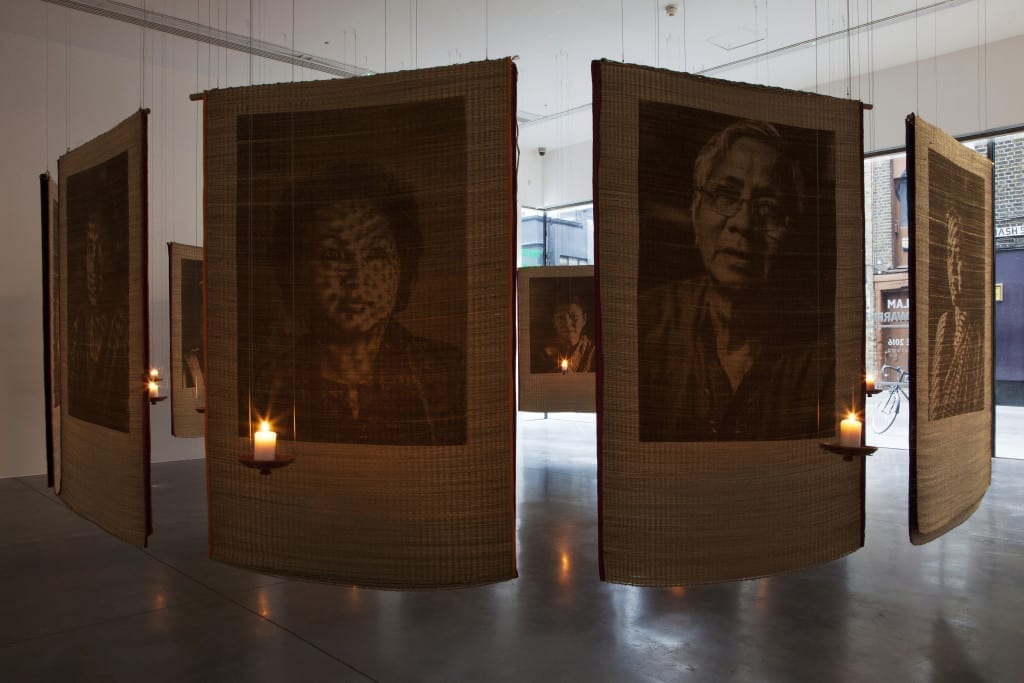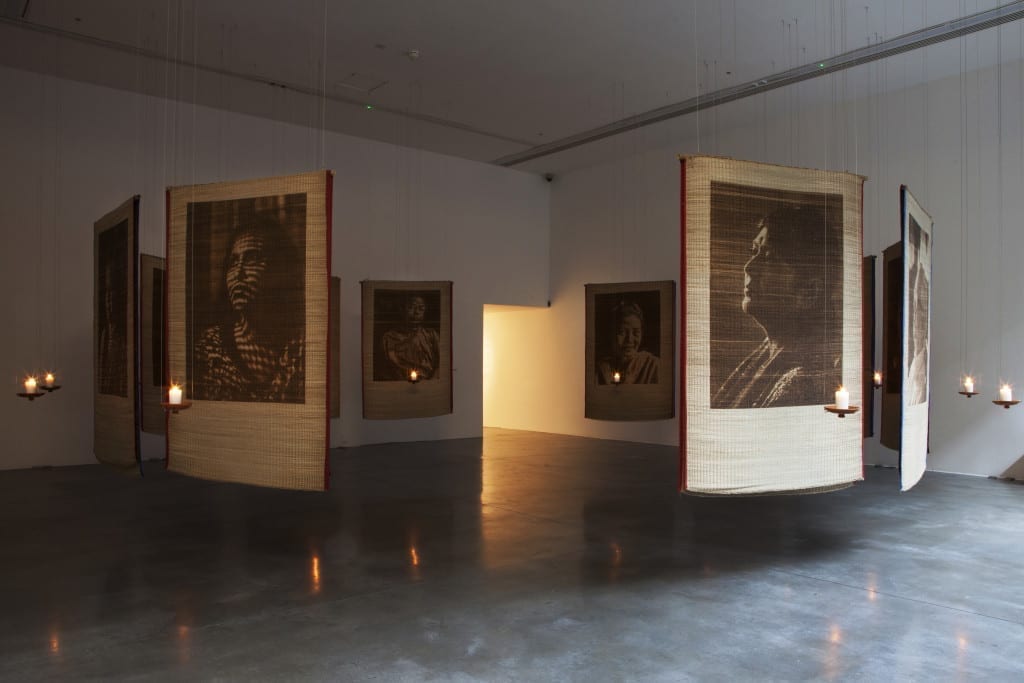Twenty years ago this month, at the age of 23, Kalpana Chakma was abducted from her home in Bangladesh. She was held at gunpoint by a military officer and two members of the Village Defence Party and driven away. She has never been seen again.
Chakma was the organising secretary of the Hill Women’s Federation in Bangladesh, an organisation that campaigned for the rights of indigenous people in the Chittagong Hill Tracts (CHT) area of Bangladesh.
As she fought to regain the land had been stolen from her community, the Pahari people by the Bagladeshi government through the Bangladeshi army, so she was deemed an enemy of the state. No-one knows if she’s a political prisoner, celebrating her 40th birthday alone somewhere. Or whether she was killed, silently, long ago.
This week, photographer and Bangladeshi activist Shahidul Alam launched an installation at East London’s Autograph ABP gallery in memory of Kalpana, and celebrating the work she so fearlessly carried out.
The exhibition features portraits of ‘Kalpana’s Warriors’, contemporary Bangladeshi campaigners living in mortal danger in an increasingly repressive environment.
 The CHT in south-eastern Bangladesh forms a mountainous borderland between Myanmar/Burma to the east, and India, to the north.
The CHT in south-eastern Bangladesh forms a mountainous borderland between Myanmar/Burma to the east, and India, to the north.
As such, this isolated region has its own specific topography, ethnic demographic, languages and religion: the area is mainly Buddhist in a country that is 89 percent Muslim.
Bangladesh, the eighth most populous country in the world, is a dizzyingly complex country. India surrounds its borders, which were established after the British Partition in 1947, and its 169 million inhabitants are squeezed into a landmass about the size of Greece.
Finding space for people is a challenge, leading the country’s government to settle some 100,000 ethnic Bengalis in the CHT during the 1970s and 1980s. This meant they seized lands from many native tribes, including the Pahari community, of which Kalpana was a member.

As a result, a militarised group Shanti Bahini (Peace Corps) was established to represent the tribes, embarking on a campaign of organised violence against the government and new settlers in the mid to late 1970s.
This movement was quashed, but there remains profound discontent among the tribal inhabitants of the CHT; discontent that is heavily suppressed by a military government that takes a dim view of political agitators.
Indeed, the Bangladeshi governement has been criticised heavily for its lackadaisical response to a recent spate of murderous attacks on prominent bloggers, publishers and activists by Islamic extremists.
But there is a very real possibility of the country’s secular government developing into a fully-fledged military theocracy in the coming years.

‘There are certain taboo areas that you do not talk about,” says Alam. “One is the military, so in this particular case because [Kalpana’s abduction] is something that directly implicates the military, there is a fear and there is a general culture of fear that prevents people from talking about it, but despite that these are people who have continued to talk, knowing that it’s a repressive environment – those are the people we’re celebrating.”
The portraits of Kalpana’s Warriors, lawyers, bloggers and activists who have refused to let go of her memory and legacy, were created using laser etching on straw mats. This technique was developed specifically for the exhibition, and is rooted in the everyday realities of the region.
It is a physical acknowledgement of Bangladesh’s factories, which use these techniques to manufacture clothes, alongside the fact that these straw mats are used as bedding in the often impoverished towns and villages of the CHT.
But this brought its own issues. “The difficulty was in developing the technique for rendering [the images] for photographic terms,” says Alam. “The different faces had to be treated differently – the type of lighting, the kind of reverse-engineering necessary to convert a 16 bit image to a digitally screened one-bit image, and the contrast rate, and of course actually making the prints.’
 Despite these technical challenges, the choice of burning was one borne of philosophical intent alongside artistic impact. Alam wanted to “remind the viewer of the fires deliberately set by the authorities who had burnt the Pahari villages, something that Kalpana was protesting about in her last confrontation with the military”.
Despite these technical challenges, the choice of burning was one borne of philosophical intent alongside artistic impact. Alam wanted to “remind the viewer of the fires deliberately set by the authorities who had burnt the Pahari villages, something that Kalpana was protesting about in her last confrontation with the military”.
Kalpana’s Warriors, by Shahidul Alam is showing at Autograph ABP gallery at Rivington Place from April 22nd to June 18th 2016. Entry is free. For more information, see here.
